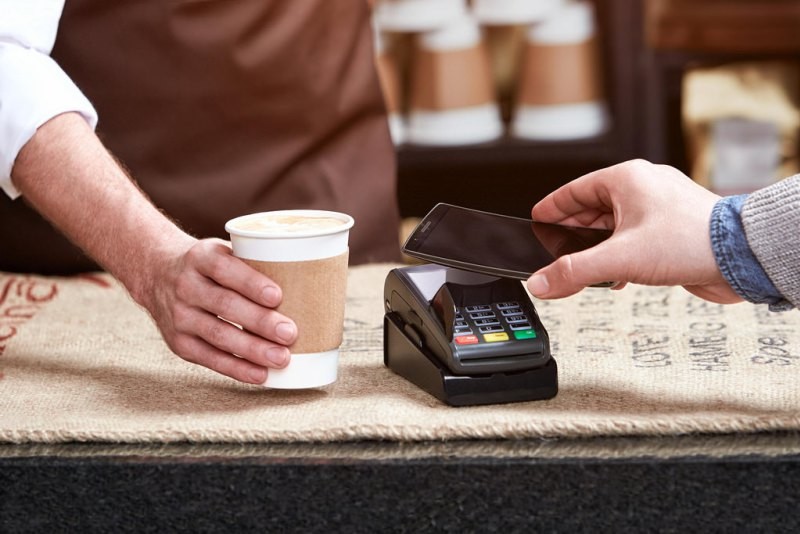
Top 5 Mobile Payment Trends 2018
The mobile revolution is well under way, with younger generations significantly preferring mobile devices over desktop computers. Mobile devices have changed how we interact with others, access information, entertain ourselves, and how we pay for things. According to the National Federation of Independent Business, mobile payments are predicted to be used by 56 percent of consumers by 2020, and the volume of mobile payments is expected to grow by 80 percent between 2015 and 2020. The widespread adoption of mobile payments by merchants and consumers has been enabled by the convergence of several important technological innovations, and mobile payments will continue changing as new technologies become widespread. This article describes five prominent mobile payment trends that are likely to share the future and transform how companies conduct businesses with their customers.Biometrics
This year, at CES in Las Vegas, Chinese technology company Vivo introduced the first smartphone with an on-screen fingerprint sensor. That smartphone, called Vivo X21, is now for sale, foreshadowing a future where biometric authentication is a seamless part of mobile experiences. Some of the largest smartphone manufacturers in the world, such as Apple and Samsung, have embraced facial recognition technology as a more flexible alternative to fingerprint identification. A major advantage of facial recognition over fingerprint identification is its unintrusive nature as no contact the equipment for presenting the biometric sample is necessary. Which biometric authentication technology becomes dominant remains to be seen, but it’s clear already that we’re moving toward a more secure future where mobile payments and other sensitive transactions are protected with robust security mechanisms.Retail Wallets
Since the dawn of electronic payments, retailers were always looking for ways how to minimize transaction fees. Particularly for larger retailers, debit and credit card transaction fees can be huge, so reducing them can lead to significant cost savings. One possible strategy how to retailers can avoid paying transaction fees involves the use of retail wallets, mobile apps developed by retailers that allow customers to easily pay and collect various loyalty bonuses. Unlike traditional mobile wallets, such as Apple Pay, Samsung Pay, or Google Pay, retail wallets can’t be used across stores. For this reason, they are used mostly by large retailers since it’s difficult for mom and pop businesses to not only develop a retail wallet app but also convince their customers to keep it installed on their devices. According to a research report from BI Intelligence, “Loyalty programs will be a significant driver in retailer mobile wallet adoption. Companies like Starbucks and Dunkin’ Donuts have been able to leverage their loyalty programs to acquire mobile wallet users, which, in turn, has driven store traffic and conversion rates.”Distributed Ledger Technology (DLT)
The current cross-border payment model is ripe with inefficiencies, which cause it to be slow and overly expensive. Distributed ledger technology (DLT), a consensus of replicated, shared, and synchronized digital data geographically spread across multiple sites, countries, or institutions, can change the status quo. The best-known example of distributed ledger technology is Bitcoin’s blockchain, but many other blockchains exist as well, offering improved efficiency, enhanced security, and lower costs. “Banks and FinTechs are looking at distributed ledger technology as the backbone of a new cross-border payments infrastructure to solve traditional cross-border payments inefficiencies (involving correspondent banks) resulting in faster and affordable services,” states a 2018 report from Capgemini.Alternative Payment Channels
The consumer electronics landscape is always changing in response to broader technological advancements. Faster mobile internet speeds, powerful mobile chipsets, and long-lasting miniature batteries have allowed for the emergence of wearables, and recent developments in the field of artificial intelligence have given us Amazon Echo, Google Home, and other smart home devices. Tractica forecasts an increase of the wearables devices until 2021, with total shipments for all wearable devices to 560 million in 2021, and Zion Market Research expects the global smart home market to reach approximately $53.45 billion by 2022, growing at a CAGR of slightly above 14.5 percent between 2017 and 2022. These new types of electronic devices open alternative payment channels, giving retailers the opportunity to capture several rapidly growing market segments. With these new channels, convenience is often the most important factor that decides where consumers flock to, and this is where smaller players can shine.Conclusion
New technologies are changing the face of mobile payments, making them more seamless and more available for all. Modern consumers who have grown up connected to the internet expect speed, flexibility, and security, and the retail industry and e-commerce marketplaces are working hard to meet consumers’ high expectations.Comments
Tags: iot, mobile, payment, retail
Trackback from your site.